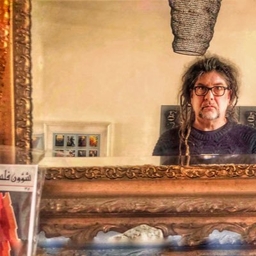
Simon Coates
Articles
-
1 week ago |
observer.com | Simon Coates
José María Velasco, The Goatherd of San Angel, 1861. Francisco Kochen, Museo Nacional de Arte INBAL Mexico City Reproduccion autorizada por el Instituto Nacional de Bellas Artes y LiteraturaOutside of Mexico, José María Velasco’s artwork is sparsely represented. Prague’s National Gallery owns a couple of his pieces, and there’s a painting from his Valley of Mexico series in the Vatican Museum. And that’s about it.
-
2 weeks ago |
thewire.co.uk | Simon Coates
June 2025 Simon Coates compiles an annotated playlist to go with his report on Dhaka’s underground music scenes in The Wire 497 The experimental music and sound work coming out of Dhaka is driven forward by three key sensations: anger, frustration and resolve. Everything is politicised in Bangladesh. Every element of day-to-day life is somehow touched by social and economic policies.
-
1 month ago |
observer.com | Simon Coates
Kara Walker, Fons Americanus, 2019. Photo © Tate (Matt Greenwood)The first time Maman appeared at the Tate Modern gallery in London, she wasn’t supposed to be the central attraction. Louise Bourgeois’s enormous bronze spider was part of a larger installation entitled “I Do, I Undo and I Redo,” commissioned to mark the opening of what has become one of the world’s most visited fine art galleries.
-
2 months ago |
medium.com | Simon Coates
It started in the late 1950s. Taking their cue from jive-talking U.S. radio presenters, Jamaican sound system DJs expanded their duties from introducing the next tune to adding their own rhyming couplets on top of blue beat and early R&B instrumentals. Crowds loved the clever patter and the DJs (or MCs) began including cultural references and political comments in their rhymes.
-
2 months ago |
observer.com | Simon Coates
Noah Davis, 1975 (8), 2013. Photo: Kerry McFate © The Estate of Noah Davis, Courtesy The Estate of Noah Davis and David ZwirnerIt wasn’t the California wildfires that closed down the Underground Museum in Los Angeles; it was grief. In a heartbreaking announcement posted on the museum’s website this past January, the artist Karon Davis, Noah Davis’ wife, explained why her family closed the art space the couple founded in 2012.
Try JournoFinder For Free
Search and contact over 1M+ journalist profiles, browse 100M+ articles, and unlock powerful PR tools.
Start Your 7-Day Free Trial →